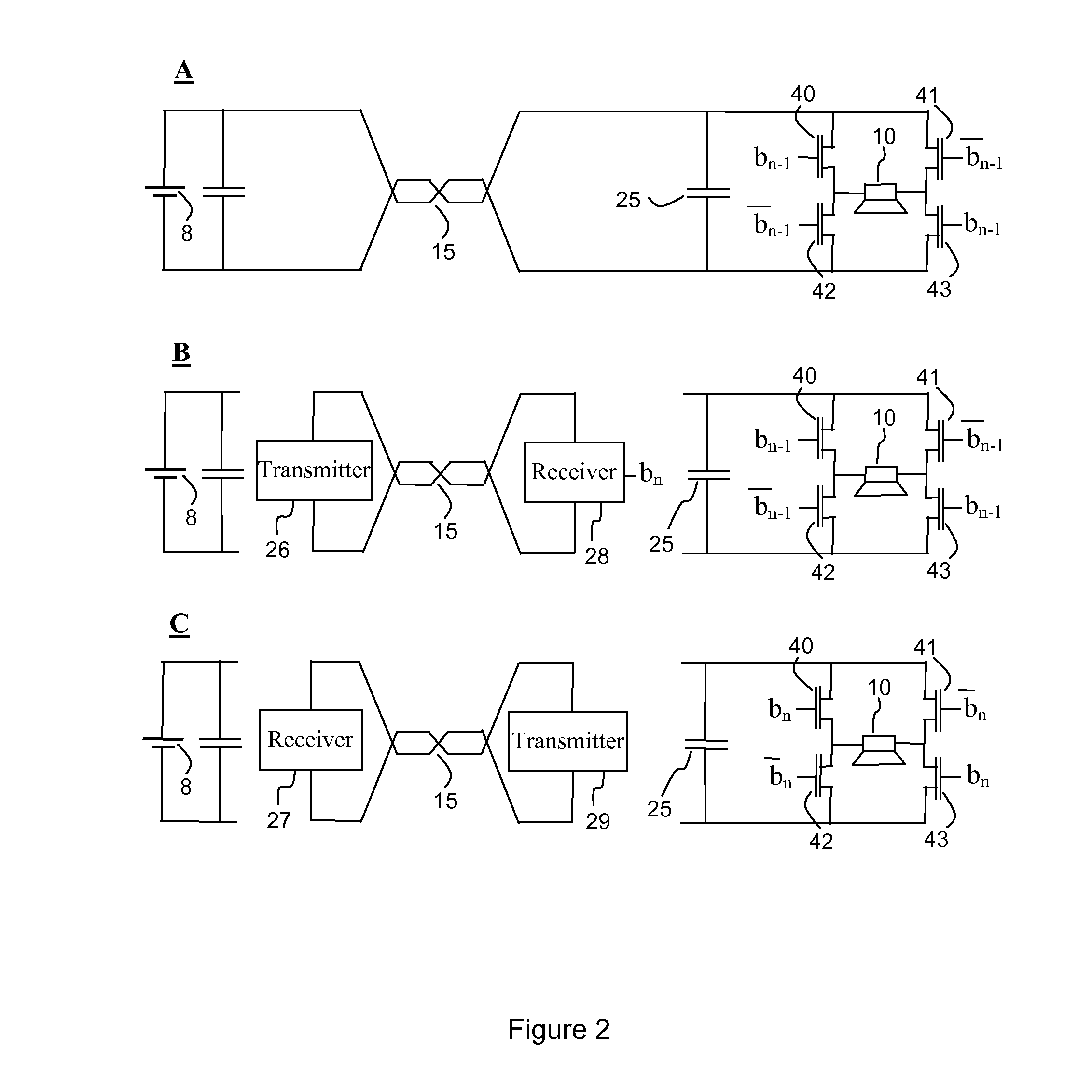Two part eeg monitor with databus and method of communicating between the parts
- Summary
- Abstract
- Description
- Claims
- Application Information
AI Technical Summary
Benefits of technology
Problems solved by technology
Method used
Image
Examples
Embodiment Construction
[0042]FIG. 1 shows the principles of an EEG monitor where the base part 1, often arranged behind the ear, comprises an electronic module 6, and a battery 8. The electronic module 6 comprises signal processing means 23, a clock generator 9 and a controller 24 for controlling the communication on the data line or databus 16. The base part may also comprise a microphone 3, which can be applied for building a hearing aid capability into the EEG monitor or for adjusting the sound pressure level of any sounds from the receiver 10 in the electrode part 2 to the background acoustical noise level. Both for FIG. 1 and the following Figs. the description is focused on embodiments where a bidirectional databus is applied, and where a receiver or speaker is arranged in the electrode part.
[0043]The electrode part 2 of the EEG monitor comprises an electronic module 7 (i.e. an electronic chip or an integrated circuit) and two or more EEG electrodes 11, 12 for measuring the EEG signal of a person to...
PUM
 Login to View More
Login to View More Abstract
Description
Claims
Application Information
 Login to View More
Login to View More - R&D
- Intellectual Property
- Life Sciences
- Materials
- Tech Scout
- Unparalleled Data Quality
- Higher Quality Content
- 60% Fewer Hallucinations
Browse by: Latest US Patents, China's latest patents, Technical Efficacy Thesaurus, Application Domain, Technology Topic, Popular Technical Reports.
© 2025 PatSnap. All rights reserved.Legal|Privacy policy|Modern Slavery Act Transparency Statement|Sitemap|About US| Contact US: help@patsnap.com



